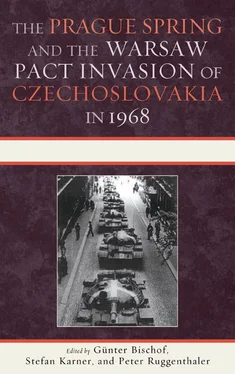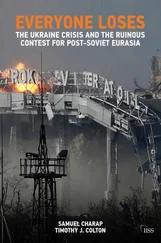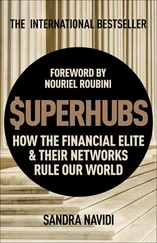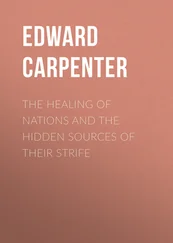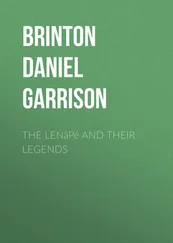It is obvious that both trends failed to produce the forces of historic change. Moreover, the chances, in retrospect, look even bleaker than they had looked at the time. In general, reform communism never gained many converts in the party apparatus; it remained limited to a few smatterings of educated (“enlightened”) apparatchiks, specializing in international relations, culture, science, and technology. Soviet Russian reform Communists still believed in the Leninist revolution and “purification” of the Leninist legacy from Stalinism, and they hesitated to see that Stalin’s empire was doomed. Yet, at the same time, Khrushchev’s revelations of the bloodsoaked past created a strong aversion to violence among these intellectuals. They no longer viewed mass politics as the major force of history. On the contrary, they gave priority to cultural enlightenment or scientific/technical progress. They regarded Soviet bureaucracy as the primary enemy of “genuine socialism” and ascribed to themselves and the growing groups of intellectuals and artists the same role that Karl Marx and Friedrich Engels had ascribed to the proletariat.
As for liberals in the broader sense, they limited their aspirations to the sphere of culture and abhorred public politics. They were especially prominent among the cultural and artistic elites, ensconced in the official unions, and firmly embedded in the system of material privileges of the regime, which they were afraid to lose. Overall, fear remained a dominant motive in their actions. It had stayed in their marrow since Stalin’s times. Only a tiny minority of the reform Communists and liberals had the courage for making public protests. The vast majority had long learned to live a double life, even more so than their Central European colleagues. Their favorite way to compensate themselves for their public life as conformists and obsequious time-servers was the cultivation of refined cultural tastes. Many of them looked at the aesthetic and ethical spheres as a purely private affair, which helped them to “save their souls” and withstand the repulsive realities of Soviet Russian life.
For all its social and intellectual capital, the Soviet technocratic intelligentsia was as split and divided as the writers and the rest of the educated classes; they all spoke different discourses typical of the era, including Stalinist, reform Communist, and nationalist ones. Consistent “liberals” were a minority even in the Akademgorodok. Even those technocrats who were highly critical of the existing economic system continued to believe that alternatives and new solutions could only be found in “improving the socialist model,” not in returning to capitalism. 37The main reformist ideas included de-centralization without the dismantling of the centrally planned economy, introduction of new labor incentives without creation of a free labor market, and introduction of the notions of “price,” “value,” and “competition” without abolition of total price control or the restitution of private property. The rejection of liberal economic thinking was the result of ideological blindness and ignorance about Western concepts, but it also reflected the “natural” social habitat of the reformers and their intellectual milieu. In the Academy of Science, including Akademgorodok, as well as in the two dozen “secret cities” of the military-industrial complex, tens of thousands of scientists, engineers, and their families lived a privileged life in which all their needs were taken care of within the framework of a property-less, centralized economy. Why wish for its destruction?
The birth of the “movement” in 1966–1967 and the flurry of activities (collective petitions, promotion of “honest” works of history and literature, providing assistance to the families of political prisoners) seemed to break the paralyzing fear. It created the men and women of a new political-ideological quality, the dissident counter-elite. It is worth reminding the contemporary reader that many dissidents had grown up as Soviet patriots and true believers in communism. Many had joined the party during the war or after Khrushchev’s Secret Speech. Practically all of them lived in Moscow and worked in the state-funded (there were no others) institutions of culture, education, and science. The group also included a very high percentage of children and relatives of the victims of Stalinist terror, children of Russified Jews, and innovative artists in aesthetic “rebellion” against the canon of socialist realism. In 1966–1967 they were united by the visceral hatred of Stalinism, “Stalinists,” and the KGB, and by the values of the left-leaning Russian intelligentsia of the nineteenth century as well as by the newly developed concept of human rights from postwar legal terminology.
The most active dissidents felt contemptuous of both their conformist colleagues and the reform Communists in positions of authority. Yet as far as a political platform, specific programs, and ideology were concerned, the dissidents were also in disarray. The same deep split existed between the movement’s liberals, socialists, and nationalists as everywhere else. Characteristically, the informal leader of the movement at the time, the writer Aleksandr Solzhenitsyn, was a profoundly illiberal thinker and Russian nationalist. He despised Moscow intellectual “smatterers” and nursed a grudge against Jews for their support of communism and the Soviet regime in the past.
Above all, reform Communists, liberal dissidents, and technocratic scientists were just the icing on the cake, the rarified urban intellectuals estranged from the masses of the Russian people. 38These masses, especially the workers and peasants, saw the party apparatchiks and the intelligentsia as different segments of the same ruling elite. 39Soviet Russian reform Communists mistrusted mass politics; they were afraid of the mass support for “Russian fascism” in the near future. As far as the liberals among the dissidents were concerned, the logic of their opposition to the Brezhnevite neo-Stalinism increased their mistrust in the Russian people, alternatively imagined as passive and slovenly and as aggressive, neo-fascist, and nationalistic. Some dissidents tilted toward an alliance with non-Russian nationalities in the Soviet Union and, most importantly, with Western scientists, scholars, journalists, and, possibly, even people connected to Western secret services. Finally, the technocratic-minded dissidents felt that the masses lacked, by definition, education and an understanding of the meaning of progress. In other words, the masses and the bulk of Communist apparatchiks belonged to the kingdom of darkness.
Sociologists haltingly began to plumb the depths of Soviet Russian society. Focusing on their own problems with the post-Khrushchev regime, they were slow to admit that society was evolving away from, not toward, their elevated ideas and schemes. 40Most remarkably, there was no student movement in Moscow in the 1960s. The new cohorts of Soviet students were much more conformist and less ideologically active than the cohorts of 1956–1958. John Scott, a contemporary American observer, remarked that education did not stimulate social activism anymore, but rather stimulated “desire for more privacy and mobility—one’s own room or apartment; the right to turn off the cliché-ridden political program on television, the desire for one’s own car; the chance to visit Paris.” 41Soviet opinion polls as well as KGB reports recorded a continuing decline of romanticism and idealism and the spread of cynical conformism. In comparison with the data of 1960–1961, many more young men and women seemed to become materialistic, indifferent to ideas, principles, and big social issues. 42
In Soviet Russian society, the credibility of the Brezhnev regime grew between 1965 and 1967; it did not decrease. Among the contributing factors was the second round of the extension of visible social benefits to millions of people (the first round took place under Khrushchev in 1955–1958), which included free housing, education, medicine, childcare, and pensions. According to Western estimates, public consumption in the USSR grew annually by 4.6 percent after 1964 (before it was 3.2 percent). The Kremlin combined increases in the purchase of wheat and consumer goods abroad with subsidized low prices for basic food and consumer items. 43Sociologists began to notice that not only the Communist nomenklatura , a predictable suspect, resisted economic reforms; even bigger resistance came from the majority of the workers and employees who preferred equality in payment to hard work and social protection to efficiency. Even before 1968, economic reforms began to grind to a halt simply because the profits of the few efficient enterprises and economic sectors were spread around the entire economy via the central budget. Even before the Prague Spring, the USSR began to drift from dynamic reformism into stagnation. 44
Читать дальше
